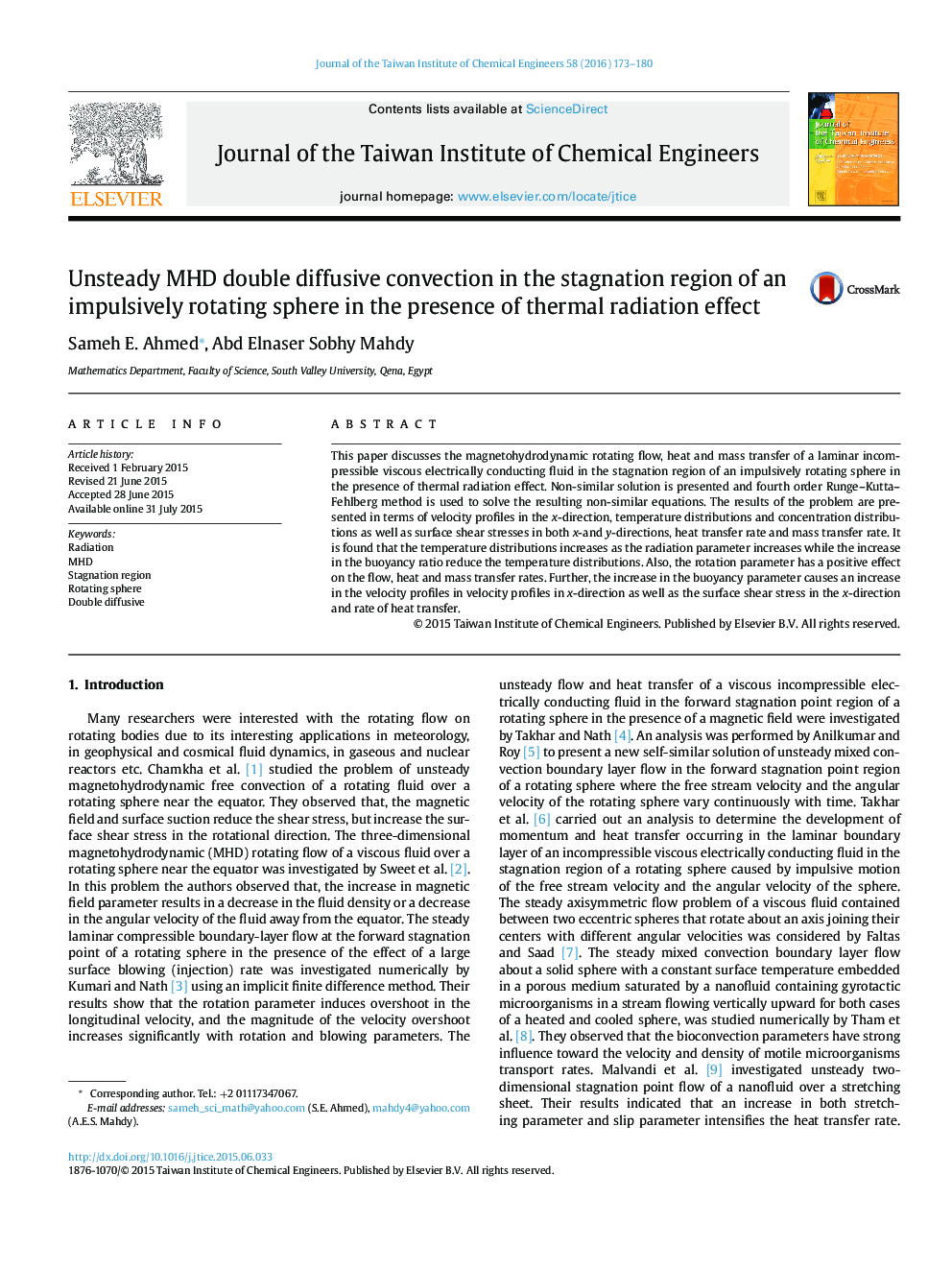| Article ID | Journal | Published Year | Pages | File Type |
|---|---|---|---|---|
| 690652 | Journal of the Taiwan Institute of Chemical Engineers | 2016 | 8 Pages |
•The increase in the rotation parameter leads to increase the velocity profiles in the x-direction.•The increase in the radiation parameter enhances the temperature distributions.•As the buoyancy ratio increases, the velocity profiles in the x-direction increases.•The presence of magnetic field has a negative effect on the fluid motion.
This paper discusses the magnetohydrodynamic rotating flow, heat and mass transfer of a laminar incompressible viscous electrically conducting fluid in the stagnation region of an impulsively rotating sphere in the presence of thermal radiation effect. Non-similar solution is presented and fourth order Runge–Kutta–Fehlberg method is used to solve the resulting non-similar equations. The results of the problem are presented in terms of velocity profiles in the x-direction, temperature distributions and concentration distributions as well as surface shear stresses in both x-and y-directions, heat transfer rate and mass transfer rate. It is found that the temperature distributions increases as the radiation parameter increases while the increase in the buoyancy ratio reduce the temperature distributions. Also, the rotation parameter has a positive effect on the flow, heat and mass transfer rates. Further, the increase in the buoyancy parameter causes an increase in the velocity profiles in velocity profiles in x-direction as well as the surface shear stress in the x-direction and rate of heat transfer.
Graphical abstractFigure optionsDownload full-size imageDownload as PowerPoint slide
